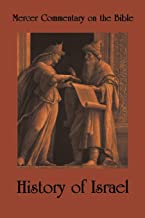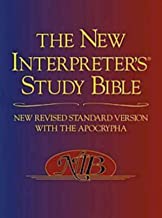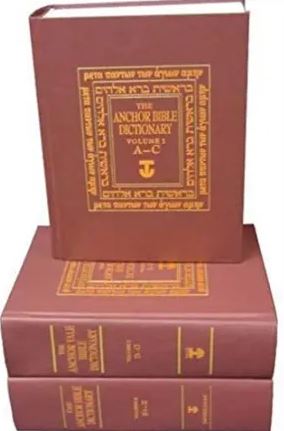>Below is my review of 1 & 2 Kings written by Volkmar Fritz. The review was published in Review and Expositor 103 (2006) 421-423.
1 & 2 Kings, by Volkmar Fritz. A Continental Commentary. Minneapolis: Fortress Press, 2003. xiv + 448 pp. $48.00. ISBN 0-8006-9530-5.
The books of 1-2 Kings provide a theological interpretation of the monarchy and of the kings of Judah and Israel. These books also record the history of the kings, beginning with the united kingdom Solomon through the fall of Samaria.
Fritz’s commentary is a translation of the German commentary that appeared in the Zücher Bibelkommentar, first published in 1996. The translation was done by Anselm Hegedorn. The commentary follows the text of the NRSV but the biblical text is adapted and modified when the author’s translation differs from the NRSV.
In his commentary Fritz addresses some literary questions related to the composition of the book. The author uses his experiences as an archaeologist and offers many archeological perspectives on issues related to the narratives in Kings. His work as the Director of the German Evangelical Institute of the Holy Land has provided the insights that influenced his interpretation of the text. He seeks to place the events narrated in Kings into its historical context. Fritz makes an attempt at identifying biblical place with modern names of locations in the Ancient Near East.
The commentary is divided into sections, each of which contains the translation and a brief introduction to that section followed by a verse-by-verse commentary. A brief introduction of less than three pages introduces the book of Kings and its structure. Fritz says that one of the purposes of the Deuteronomic History was to explain the exile of the nation as a result of the disobedience against the book of the law (Deuteronomy) and its principal demand that Yahweh alone has to be worshiped as the place that he had chosen, the temple of Jerusalem. The book of Kings was written to demonstrate the exile of Israel was the result of the nation turning from Yahweh. The book shows that the kings were guilty of violating the demands of the covenant since they encouraged the people to worship other gods.
Fritz emphasizes that his book is not intended to solve the problem of the formation of the Deuteronomic History. His purpose is not a presentation of the results of the literary-critical study of the text, but rather the commentary “is an attempt to elucidate the often alien world of the Bible by explaining its presuppositions” (p. 3).
He treats the first two chapters, part of the so-called Succession Narrative, as a unit. He rejects the idea that the Succession Narrative had a long oral tradition. Rather, he believes it was written soon after the events and that the author” was able to draw on the detailed knowledge of the situation at the court” (p. 11). Fritz refers to the narrative as “a literary fiction of great artistic value” since it is impossible to verify the narrative historically (p. 11).
1 Kings 1-2 is actually the conclusion and climax of the so-called Narrative of the Succession to the Throne of David. Fritz believes 1 Kings 1-2 and 2 Samuel 9-20 formed a single narrative. This unity is assumed based on its composition, style, and intent. However, even within this composition there are several late additions. These additions were incorporated during the process of expanding the traditions about Solomon. He called the Succession Narrative “high-level historiography.”
The narratives about the enthronement of Solomon and the events that followed are not historical despite the fact that they pretend to give insights into the happenings at the court. These narratives represent a fictive form of the events related to the enthronement of Solomon. Fritz believes the characters in the struggle for the throne were historical figures and that the fate of Adonijah and his party was not a pure invention of the writer. However, the circumstances are pure fiction (p. 31).
Fritz believes that Solomon’s visit to Gibeon is legendary and that the whole narrative is fictitional. To Fritz, the list of the twelve governors and their provinces is one of the few original documents incorporated into the Deuteronomic History. This list was the work of the royal scribal school and it is of extraordinary historical value. The narrative dealing with the treaty between Solomon and Hiram of Tyre is also fictitious, even though the whole event is presented as historical.
As for Solomon’s extensive building projects, Fritz says that the concise character of the statement does not necessarily vouch for their historicity. As for the building at Hazor and Megiddo, and Gezer, Fritz believes that the claim of Solomonic involvement is disputable. Even though the construction cannot be attributed to Solomon, archaeological efforts can prove a certain density of population in the tenth century and can provide some information about the history of settlement on the sites. The conquest of Gezer is of no historical use because it cannot be verified.
The description of Solomon’s wealth and the splendor of his reign cannot be regarded as historically reliable because the narratives are of a general kind and cannot be verified. Even those statements that seem to reflect reality are backward projections from the later period of the monarchy
Fritz believes sources such as “The Book of the Acts of Solomon” and “The Book of the Annals of the Kings of Israel” are fictitious and never existed. They were mentioned “to fake extensive source material for the depiction of the period of the monarchy” (p. 157).
The books of 1-2 Kings end with an act of mercy by the king of Babylon that allows for a ray of hope for the continuation of the Davidic dynasty. The Deuteronomic History, however, focuses on the destruction of Jerusalem. The two epilogues at the end of the book, the appointment of Gedaliah as governor of Judah and the pardon of Jehoiachin by Evil-Merodach, do not change the fact that the history ends in judgment.
The commentary contains a selected bibliography on books and articles on Kings; most of the entries are in English. The book includes three indices: one on Ancient Sources, another on Divine Names, and the last one on Geographical Names.
The commentary demonstrates Fritz’s knowledge on the archaeology and history of ancient Israel. However, since Fritz does not accept the historicity of many of the events in Kings, pastors and seminary students will struggle with some of his conclusions.
Claude Mariottini
Professor of Old Testament
Northern Baptist Seminary
Tags: Archaeology, 1-2 Kings, Fritz















